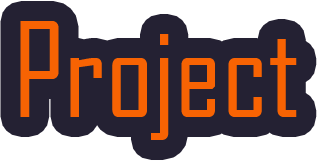Team:Tianjin/Project
From 2012.igem.org
Yingjinyuan (Talk | contribs) |
|||
| Line 1: | Line 1: | ||
{{:Team:Tianjin/frame/project}} | {{:Team:Tianjin/frame/project}} | ||
| - | == | + | ==1. AegiSafe O-Key: The orthogonal system of regulating translation== |
| - | + | The synthesis of protein relies on the transcription-translation network. In transcription, mRNA is synthesized through complementary base pairing by RNA polymerase from the DNA template, and is followed by translation. Translation is the third stage of protein biosynthesis. In translation, mRNA produced by transcription is decoded by the ribosome to produce a specific amino acid chain, or polypeptide, that will later fold into an active protein. Therefore, we can say that translation is one of most important of activites in a cell. <br\> | |
| - | + | ||
| - | + | Due to its importance of protein synthesis, there are intricate and delicate regulation systems. To regulate transcription, cells alter the gene expression levels. This is called transcriptional regulation. Many means of transcriptional regulation, such as various mechanisms as specificity factors, activators, etc., are presented in a cell. There are also inducible and repressible systems, and transcription factor that can determine the initiation rate of transcription.<br\> | |
| - | + | ||
| - | + | While a number of genetic tools exist for regulating transcription in cells, far fewer tools exist for translation. Of the tools available in bacteria, the most popular are riboregulators, both cis- and trans-activating, and orthogonal ribosomes (o-ribosomes). In terms of reprograming translation, o-ribosomes are especially powerful as they enable one to partially decouple translation from the native protein synthesis machinery. In particular, o-ribosomes can translate genes with altered Shine-Dalgarno (SD) sequences not recognized by host ribosomes. Therefore, o-ribosomes can be used to explore gene expression dynamics as they potentially provide a method for tuning translation rates. Furthermore, o-ribosomes may have application in synthetic biology as they introduce new functionality within cells.<br\> | |
| - | + | ||
| - | + | In this year's project, we focus on modifying the Sine-Dalgarno (SD) sequence of the mRNA and the anti-Shine-Dalgarno (ASD) sequence of the 16S rRNA of the ribosome to construct a orthogonal translation system called the AegiSafe O-Key. Aegis was originally the shield that was associated with Zeus and Athena, which offers protection. AegiSafe means our orthogonal system secure the environment from potential biosafety issue. O-Key stands for Orthogonal Key, which indicates that our system can not only shut down contamination, but also using the orthogonal system to selectively open our translation pathway like a key. In the following sections, we will elaborate on the AegiSafe O-Key.<br\> | |
| - | + | ||
| - | + | ||
| - | + | ||
| - | + | ||
| - | + | ||
| - | + | ||
| - | + | ||
| - | + | ||
| - | + | ||
{{:Team:Tianjin/footer}} | {{:Team:Tianjin/footer}} | ||
Revision as of 10:15, 13 September 2012

1. AegiSafe O-Key: The orthogonal system of regulating translation
The synthesis of protein relies on the transcription-translation network. In transcription, mRNA is synthesized through complementary base pairing by RNA polymerase from the DNA template, and is followed by translation. Translation is the third stage of protein biosynthesis. In translation, mRNA produced by transcription is decoded by the ribosome to produce a specific amino acid chain, or polypeptide, that will later fold into an active protein. Therefore, we can say that translation is one of most important of activites in a cell.
Due to its importance of protein synthesis, there are intricate and delicate regulation systems. To regulate transcription, cells alter the gene expression levels. This is called transcriptional regulation. Many means of transcriptional regulation, such as various mechanisms as specificity factors, activators, etc., are presented in a cell. There are also inducible and repressible systems, and transcription factor that can determine the initiation rate of transcription.
While a number of genetic tools exist for regulating transcription in cells, far fewer tools exist for translation. Of the tools available in bacteria, the most popular are riboregulators, both cis- and trans-activating, and orthogonal ribosomes (o-ribosomes). In terms of reprograming translation, o-ribosomes are especially powerful as they enable one to partially decouple translation from the native protein synthesis machinery. In particular, o-ribosomes can translate genes with altered Shine-Dalgarno (SD) sequences not recognized by host ribosomes. Therefore, o-ribosomes can be used to explore gene expression dynamics as they potentially provide a method for tuning translation rates. Furthermore, o-ribosomes may have application in synthetic biology as they introduce new functionality within cells.
In this year's project, we focus on modifying the Sine-Dalgarno (SD) sequence of the mRNA and the anti-Shine-Dalgarno (ASD) sequence of the 16S rRNA of the ribosome to construct a orthogonal translation system called the AegiSafe O-Key. Aegis was originally the shield that was associated with Zeus and Athena, which offers protection. AegiSafe means our orthogonal system secure the environment from potential biosafety issue. O-Key stands for Orthogonal Key, which indicates that our system can not only shut down contamination, but also using the orthogonal system to selectively open our translation pathway like a key. In the following sections, we will elaborate on the AegiSafe O-Key.
 "
"



















